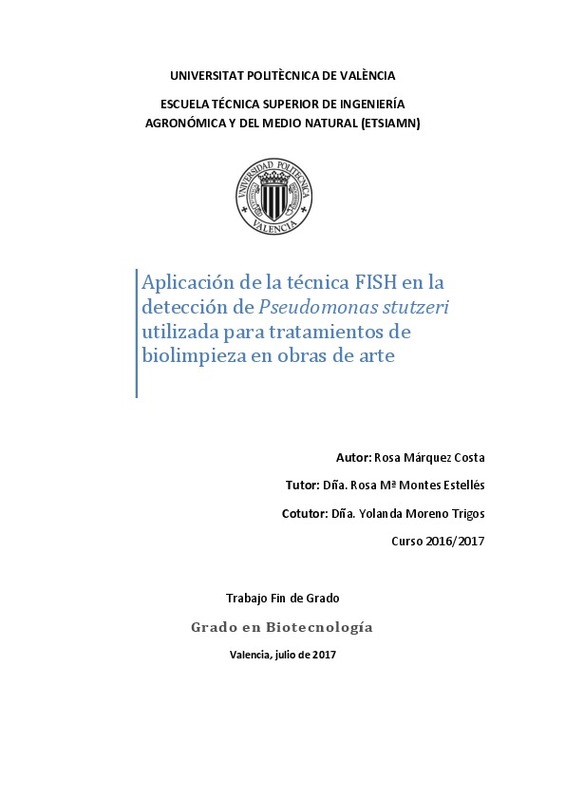JavaScript is disabled for your browser. Some features of this site may not work without it.
Buscar en RiuNet
Listar
Mi cuenta
Estadísticas
Ayuda RiuNet
Admin. UPV
Aplicación de la técnica FISH en la detección de Pseudomonas stutzeri utilizada para tratamientos de biolimpieza en obras de arte
Mostrar el registro completo del ítem
Márquez Costa, R. (2017). Aplicación de la técnica FISH en la detección de Pseudomonas stutzeri utilizada para tratamientos de biolimpieza en obras de arte. http://hdl.handle.net/10251/86567
Por favor, use este identificador para citar o enlazar este ítem: http://hdl.handle.net/10251/86567
Ficheros en el ítem
Metadatos del ítem
| Título: | Aplicación de la técnica FISH en la detección de Pseudomonas stutzeri utilizada para tratamientos de biolimpieza en obras de arte | |||
| Autor: | Márquez Costa, Rosa | |||
| Director(es): | ||||
| Entidad UPV: |
|
|||
| Fecha acto/lectura: |
|
|||
| Resumen: |
[ES] En el laboratorio se ha desarrollado una técnica para limpiar la superficie de obras de pintura
mural mediante la aplicación de bacterias vivas, proceso conocido como Biolimpieza, en donde
éstas eliminan restos de ...[+]
[EN] In the lab it has been developed a technique for cleaning the surface of wall paintings by the
application of live bacteria, process known as Biocleaning, in which the bacteria remove
incrustations which damage the ...[+]
|
|||
| Palabras clave: |
|
|||
| Derechos de uso: | Reserva de todos los derechos | |||
| Editorial: |
|
|||
| Titulación: |
|
|||
| Tipo: |
|
recommendations
Este ítem aparece en la(s) siguiente(s) colección(ones)
-
ETSIAMN - Trabajos académicos [3545]
Escuela Técnica Superior de Ingeniería Agronómica y del Medio Natural







